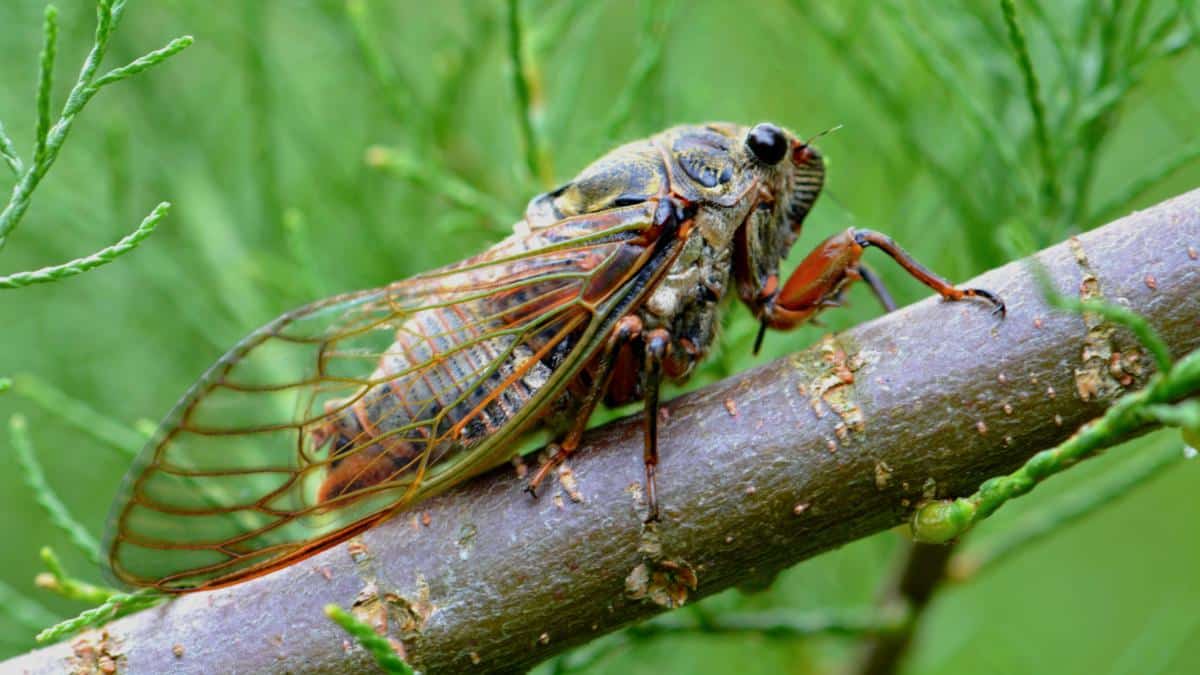

Billions of cicadas are about to emerge from a 17-year slumber. Minh Hoang Cong / 500px / Getty Images
In just a few weeks billions of cicadas are expected to emerge after 17 years underground, swarming portions of the U.S. from Northern Georgia to New York, The Guardian reported. While some people’s skin might crawl upon hearing this news, cicada researchers are hoping to learn more about the mysterious species.
Ecology and evolutionary biologists at the University of Connecticut, including Professor Chris Simon and Assistant Professor in Residence John Cooley, are among the scientists studying the molecular genetics, evolutionary biology and behaviors of periodical cicadas, which are cicadas that are tied to a 13- or 17-year life cycle. But to answer their looming questions, researchers need to understand where to find the cicadas this spring and summer, UConn Today reported.
“I used to have to contact every agricultural extension agent in every county a brood of cicadas occupied and ask them to gather information,” Simon explained, according to UConn Today. “I had to go to the county courthouse, meet the agent, pick up a map of each county, get the phone numbers and address for people who reported, and then drive around to each house or farm.”
Today, researchers are enlisting citizen scientists to help track cicadas on smartphones. Developed by Gene Kritsky, dean of behavioral and natural sciences at Mount St Joseph University in Cincinnati, the app, called Cicada Safari, encourages anyone to snap a photo of a cicada.
Once the photo is uploaded, the app captures the time, date and geographical coordinates, helping scientists better track the cicadas’ emergence.
“Using citizen science to help map periodical cicadas goes back to the 1840s, when Gideon B. Smith wrote newspaper articles asking readers to send him details of where they saw cicadas,” Kritsky told Entomology Today. “By the time of his death in 1867, he had documented all the known broods of cicadas.”
The cicada swarms are expected to appear in mid-May as temperatures rise. Known as Brood X, they “may amass in millions in parks, woods, neighborhoods, and can seemingly be everywhere,” Gary Parsons, an entomologist at Michigan State University, told The Guardian. “When they are this abundant, they fly, land and crawl everywhere, including occasionally landing on humans.”
While cicadas don’t harm people, scientists do suggest preventing pets from eating the insects because it might make them sick. The insect mating calls will also be hard to miss, as their sounds can reach up to 100 decibels — “the same sound as standing next to a motorcycle revving its engine,” The Guardian reported.
The cicada emergence could give researchers access to data they’ve never had before, The Guardian noted. “I have been mining historical emergence records for 45 years, and in the process we have discovered new populations of broods that had been missed for over a century,” Kritsky told Entomology Today. “It’s amazing that an insect that has been studied for so long and by so many still has secrets to reveal.”
This year, scientists behind the app are hoping to receive 50,000 observations. “This is the big one, a generational event,” Kritsky told Entomology Today. “For those who weren’t alive 17 years ago or who were too young at the time and can’t remember, they are in for quite an experience.”
- Millions of Cicadas Set to Emerge After 17 Years Underground ...
- Billions of Cicadas May Soon Be Coming to Trees Near You ...
- Trillions of Brood X Cicadas to Emerge in 15 States This Spring ...

 233k
233k  41k
41k  Subscribe
Subscribe 